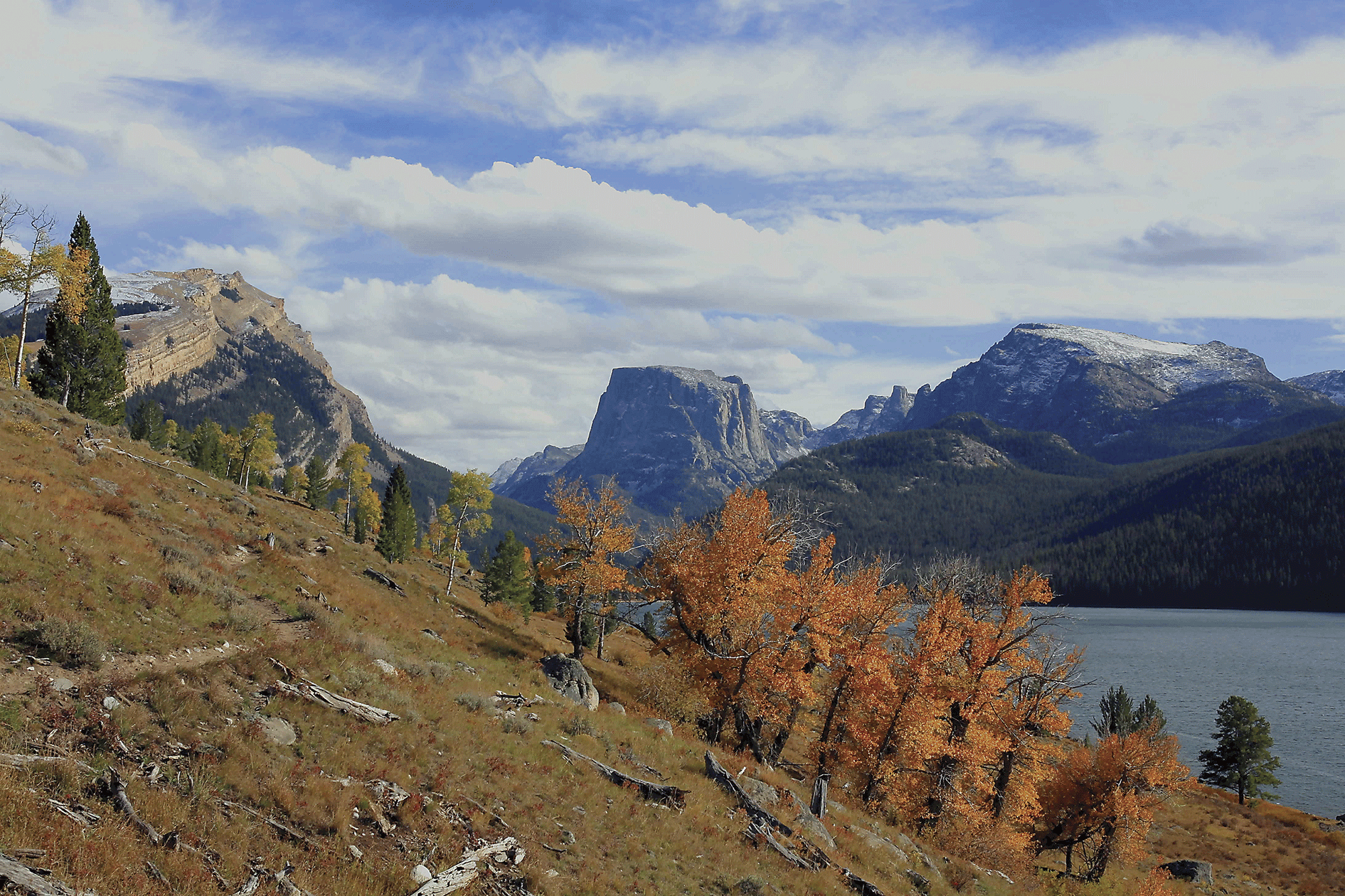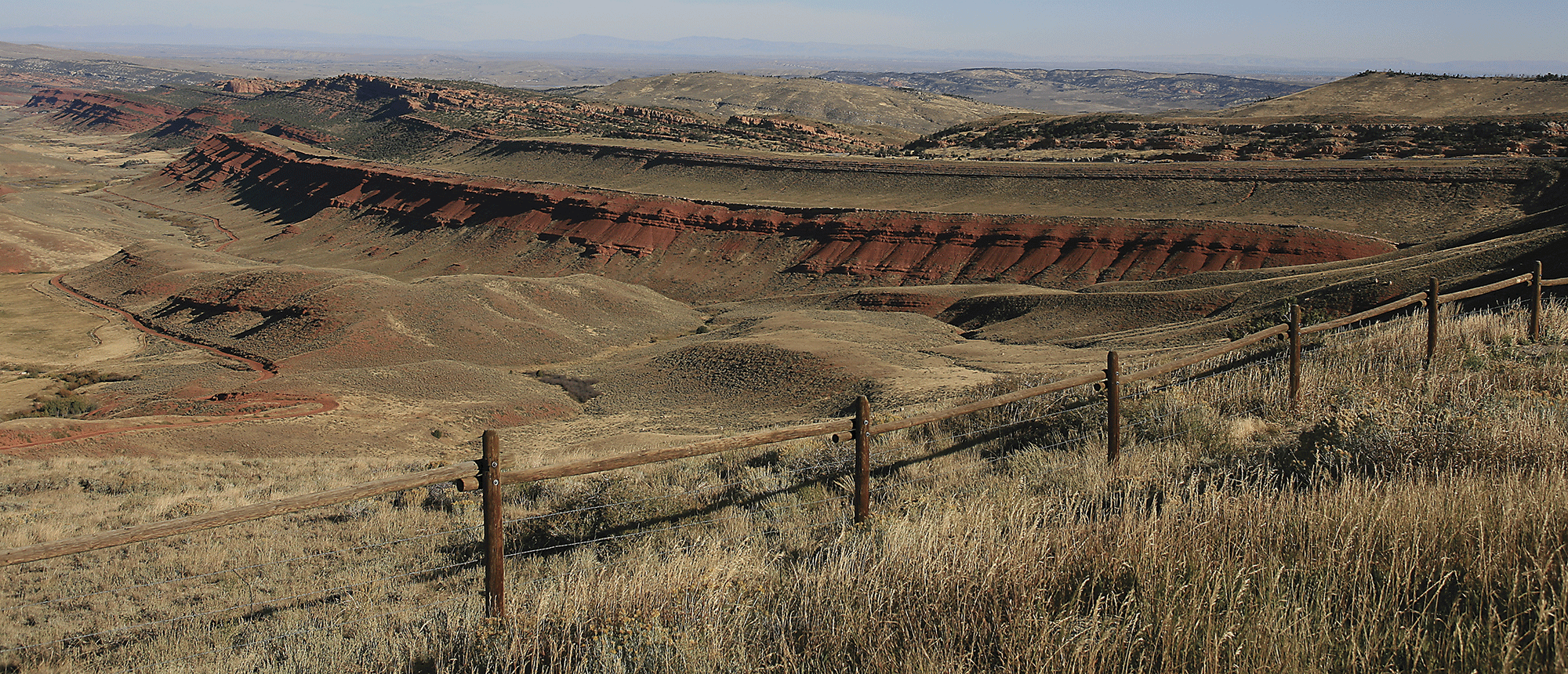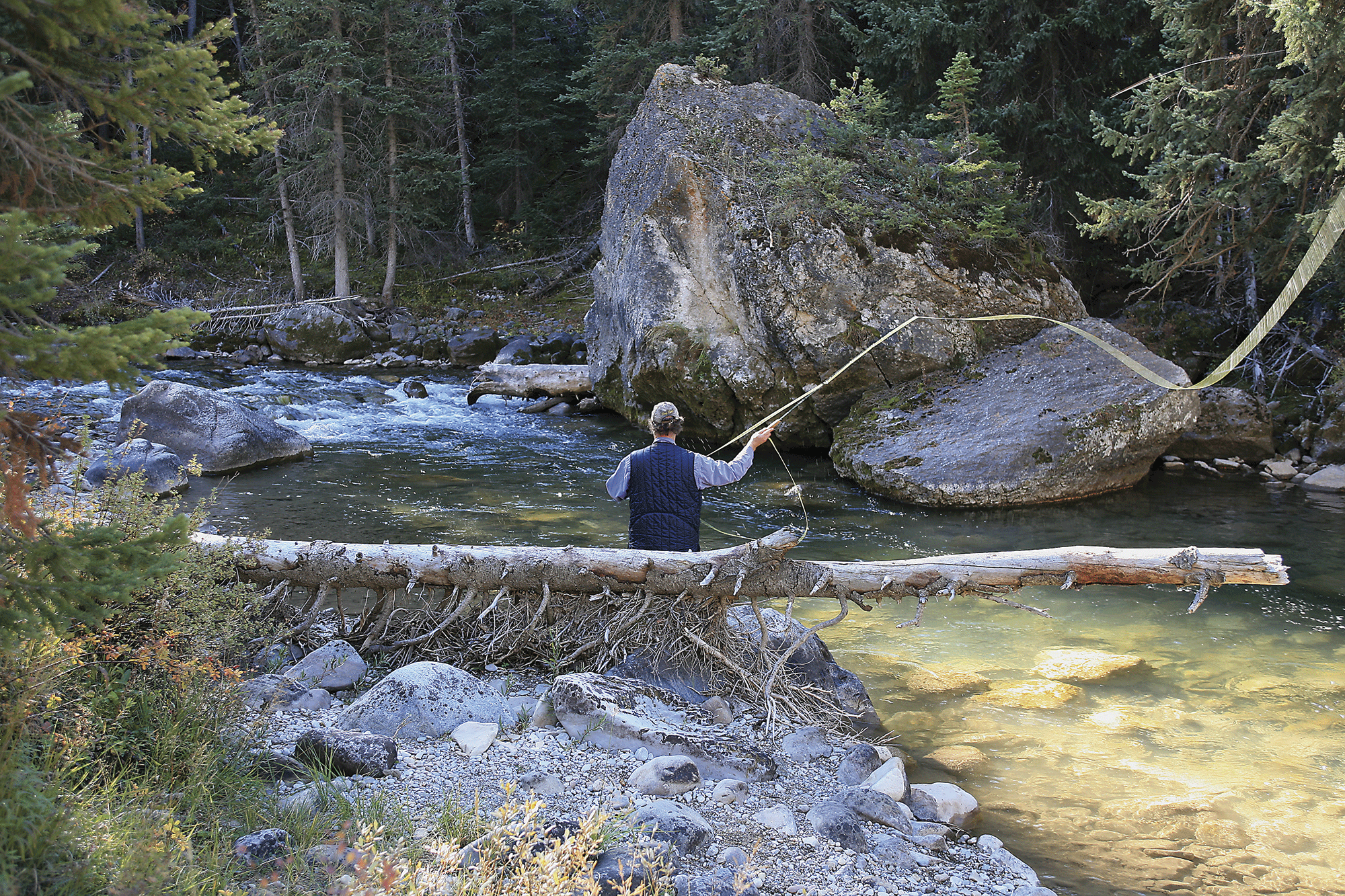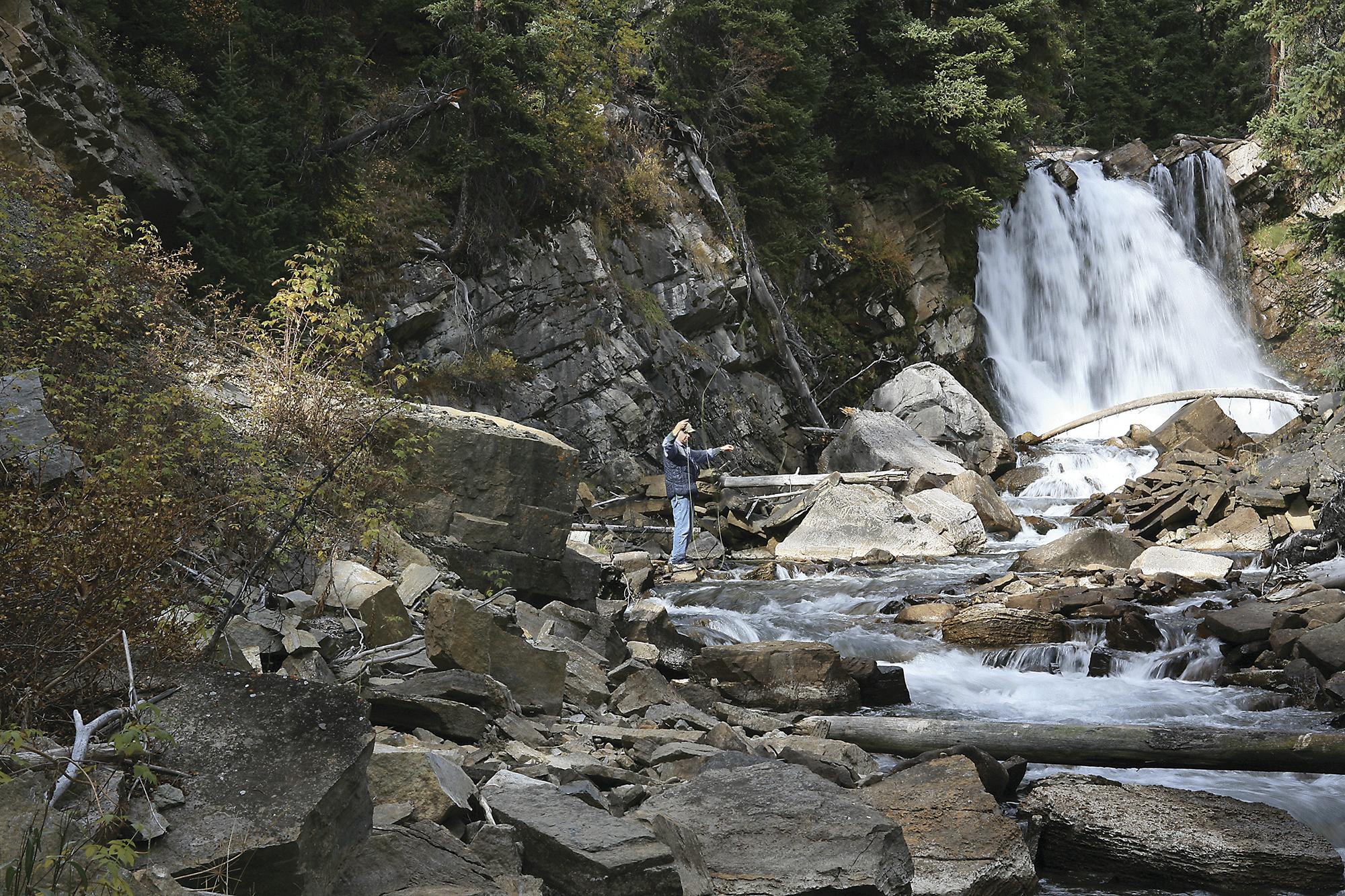
17 Oct Wyoming Cutt-Slam: Close But No Cigar
FOR SOME OF US NOT MAKING THE UNCOMMON EFFORT to define failure and success on our own terms can transform life into a largely disappointing experience. For example, I interpret the hundreds of book and magazine proposals that have been blithely rejected by uncaring, jaded editors and publishers over the years as nothing more than the inability of near moronic individuals to recognize wit and brilliance on my part. The fact that the Cubs have yet to win a World Series in my lifetime (or my father’s, or in nearly a century) is a personal object lesson in perseverance and loyalty. Losing my hair is perceived as a sign of high testosterone levels. And on it goes through convoluted time.
So when Ginny and I set out for the hinterlands of western Wyoming in search of what the Wyoming Game and Fish Department calls the Wyoming Cutt-Slam, I had already internally acknowledged that I would probably not catch (and release) the four sub-species of cutthroat trout in question: Yellowstone Oncorhynchus clarki bouvieri, Bonneville Oncorhynchus clarki utah, Colorado Oncorhynchus clarki pleuriticus and Snake River (proposed classification of Oncorhynchus clarki behnkei). If I do succeed, I will need to submit a form stating where and when I caught the individual cutthroat along with digital photo documentation of each variety. Then I will receive a color certificate honoring my achievement. There are no expectations on my part concerning fulfilling the Slam, but should this eventuate, I definitely plan on having the full-color certificate framed and hung in a prominent location in our living room.
I’m not into competition or quest of any kind. I was initially reluctant to participate in the program, but reading the information on the department’s Web site changed my mind. It stated that the Cutt-Slam is” a program designed to encourage anglers to learn more about Wyoming’s cutthroat sub-species and develop more appreciation and support of the Wyoming Game and Fish Department’s cutthroat management program.” I much prefer native species to introduced gamefish, as in casting to the Westslope and Yellowstone cutthroat, mountain whitefish, Montana arctic grayling (Thymallus arcticus montanus) and Bull trout as opposed to what most fly fishers prefer chasing — brook, brown and rainbow trout.
Inured to what most psychologically healthy individuals term abject failure, I figured two, possibly three, species landed would be a rousing success, but I had little idea how this peripatetic angling road trip would play out. The slowly-realized sinister nature of the adventure will haunt me for the remainder of my life, maybe even threatening the long-term stability of my rock-solid marriage.
As I was once again to experience, the angling gods are a capricious and cruel lot.
We set out for the South Fork of the Shoshone River outside of Cody, near the southeastern corner of Yellowstone Park. The road was paved, degenerating into gravel winding through development after development, then a long-running series of trophy and dude ranches. Once on the Shoshone National Forest, every trailhead and turnout was jammed with pickups and SUVs pulling horse trailers. The high country big game season was in full swing. Despite all of this human degradation, the sharp, jagged mountain peaks, escarpments and sawtooth ridges are spectacular with a fresh dusting of snow. At the end of the road we stop and work our way up a trail to some passable pocket water. There are excellent pool and riffle stretches all along the way to the parking spot but all of this water is on private land and therefore off limits. This is unlike Montana where an angler can access water from public roads and bridges and wade to his heart’s content as long as he stays within the high-water marks; in Wyoming water that flows through private holdings is PRIVATE! No exceptions. We tend to take this freedom for granted in Montana, but it is truly a gift not to be squandered or given up. Not on my watch. Not while I’m still kicking.
On this trip I packed a number of specialty rods that I don’t use all that much, but treasure none the less. For the South Fork I rigged up an Orvis 6-foot, 1-ounce, 2-weight — a deceptively strong and accurate rod. Lightweight rods are a delight on small streams such as this one as long as the fish are played quickly so that they are not exhausted to the point of dying. Attached to the end of a 4x tippet is a Royal Wulff. The first four casts to likely-looking holes produce small Yellowstone cutts that run in splashing circles briefly then came splashing to my wet hands. Ginny photographs the little guys as I admire them before turning them free.
The South Fork is far too residential and locked-up for our wild tastes so we decide to cut the fishing short and move on down the road. Since we have a long distance to cover for our next cutthroat adventure somewhere in the southwestern part of the state, we decide to chew up some highway after a snack of sharp white cheddar, sausage, sourdough bread and orange juice.
After marveling at the rock walls and cliffs studded with myriad rock formations that tower over the emerald Wind River below Thermopolis, we spend a full-moon night along the sandstone crested shore of a west-central Wyoming reservoir. At sunrise we hit the road early and manage to kill a week or two waiting for coffee at a kiosk staffed by individuals more interested in making their own specialty concoctions than waiting on paying customers. Then the road climbs up over the southern end of the Wind Rivers, glowing in autumn aspen saffron, before drifting lazily past the tourista mining and Oregon Trail townsites of Atlantic City and South Pass City. The day is high altitude, clear blue, late September. Antelope by the hundreds graze, laze and stand casually in the sage flats. We roam the high desert making our way to the town of Kemmerer, home of the original J.C. Penney’s store. Gas is cheap here and the residents are friendly. We load up on food and fuel and head out west-northwest toward a river drainage of isolated and obscure dimensions. Turning up a narrow paved road that turns quickly to gravel and dirt we see the tributary we are looking for — a perfectly clear sapphire stream twisting like a sensual snake through golden yellow and orange stands of aspen, willow and alder. Angus and Hereford stand dumbly beneath the still warm sun. Eagles glide. Hawks circle above soon-to-be-dead rabbits. Mule deer hold on steep sage-pocked slopes. Rounded mountains topped with new snow bend off into the distance. This is paradise in our eyes.
We drop down a steep rocky two-track to the stream, set up camp and head to the water. Beautiful water it is — riffles, runs, pools, undercut banks — but after hours of casting all there is to show are a missed 1-foot Bonneville and the vanishing site of three tiny trout fleeing for their lives at our approach. We walk back to camp somewhat perplexed but not discouraged. Tomorrow will see us through. A grilled rib-eye and baked potato dinner, eaten as the full moon rises over a steep ridge, reinforces our optimism and resolve. Strong black coffee laced with sugar and thick cream, drunk within a sparkling sunrise frosty morning, further our determination.
Along the road a piece, sliding through a steep cutbank of rock, sage and small cactus we work our way upstream for perhaps a half-mile with no luck. Hare’s ear nymphs, elk hair caddis, Royal Wulffs, BWOs — all to no avail. I’d noticed grasshoppers clacking and crash landing in the roadside grasses yesterday and begin to hear them as the day grows warmer. Tying on the rattiest one I have, then greasing the sucker down to make sure it rides high and dry, I launch it to the head of a long, wide, deep aquamarine pool. The bug lands with a “plop.” I can smell the slightly creosote scent of the sage as it heats up. A warm breeze slides downstream. A few clouds ride the wind. Magpies and crows argue over something rotten on a nearby rise. The water burbles over and around the cobbled streambed that flashes bright earthy shades of red, tan, ochre, grey and green. The fly drifts slowly to me when I spot an open mouth, white inside of jaws clearly visible as a Bonneville rises slowly from the river’s bottom following the hopper in near-vertical position for 5, 6 feet before taking the bait.
I set the hook and the trout runs and leaps for 20 feet, then sounds and runs some more before breaking the surface in a spray of crystal to jump for the light several more times. The fish comes to me struggling at this indignity and assault on its natural freedom. I hold the trout and wonder at its design, its colors and its similarity to Yellowstone cutts. Ginny takes a bunch of photos and then the fish is turned loose, disappearing in the green-blue depths. Two more casts produce two more cutthroat like the first one and the day is made. We’re happy and back at the Suburban drinking pop, eating sausage and cheese and riding a fine day, one of the finest growing better by the moment. We make plans to head for the upper Green River to seek Colorado cutthroat tomorrow morning.
The drive up to an open, grassy flat on the Green, a few miles below Green River Lakes in the Bridger Wilderness, is pleasant, scenic and uneventful. We set up camp and decide to enjoy the snow-crested peaks of the Wind River Range while cooking dinner. There’d be plenty of time to catch Colorado cutts tomorrow and the next day, or so I thought. Square Top Mountain dominates the skyline as it passes through grey-indigo, lemon, orange and then darkening lavender color phases as the sun drops from the sky.
The next day we fish the river for a couple of miles catching plenty of 8- to 12-inch wild rainbows. Beautiful fish but not the cutts we are after. For some reason I’m growing anxious about this and not really enjoying myself like I always do when fishing. Most curious. We decide to hike into the wilderness along the eastern shore of the lower lakes. The wind is severe from the south, whipping whitecaps and blowing leaves from the aspens in a steady stream as we work our way several miles to Clear Creek. The stream pours over a natural barricade of granite plummeting 89 feet to form a shallow pool and then races downhill through a rocky streambed to join the Green. Flakes of iron pyrite (fool’s gold) sparkle among the dark shoreline sands.
Royal and Green Humpies turn numerous small rainbows colored intensely in purple, crimson, dark green and silver with black spotting and bluish parr marks along the flanks, but again no Colorados.
“I thought for sure they’d be in this stream if anywhere,” I say to Ginny. “I don’t get it. This is crazy.”
Look at the light playing off the waterfall,” Ginny says.
“Isn’t it beautiful? What a great day.”
“Yeah. Right,” I say, all the while wondering where I’ll find a Colorado cutt so I can complete this portion of the Slam. I realize that this pursuit is taking me over and spoiling the joy of fishing and Ginny’s good time, but those are minor considerations at this point. There is a goal here that needs to be met. I’m obsessed. Driven. Fame and silliness are riding on each cast. The tension is growing, becoming thick, palpable. Can I do this? The imagined crowd looks on in studied silence.
We fish for a couple of hours, taking colorful rainbows but no Colorados. We head back to camp, an enjoyable exercise with the late afternoon sun warming us, the dense pine forest across the lake and highlighting mountains that rip skyward all over the place.
We decide to drive back down south to Big Piney and work the South Piney Creek and its tributary, the Landers Fork. Sage flats and bluffs dotted with oil rigs and storage facilities dominate the landscape as we head into the Wyoming Range. I’m growing restless not catching the Colorado cutts and even a bit grumpy. I realize that I’ve succumbed to a variation of competition fishing and don’t like the sensation. Competitive fly-fishing — one-fly contest lunacy rising in my head. Enough. Enjoy the rainbows from yesterday, the country I’m passing through, the fishing that awaits. At the Landers Fork I rig up a unique 5-foot, 2-weight rod made by Damon Fly Rods — ideal for small, brushy streams like this one. Lots of decent casts to pools and pockets. No fish of any stripe. The same holds true lower down on the South Piney in larger water that is as pretty as any I’ve seen. Fishless all the same.
One last shot will be along Highway 189 as we head north toward Jackson. At the bridge that spans Cottonwood Creek I get out of the Suburban and peer into the weedy creek. There are a dozen or more Colorado cutthroat. I only want one so I rush back to grab my rod when Ginny points out a large silver Dodge Ram parked on a ridge above us, driver’s-side window rolled down. I can clearly see a henchman — no doubt a common laborer for the nearby, and as I now notice, posted trophy ranch — monitoring us with a pair of large binoculars.
Confrontation, harsh words, fisticuffs, gunfire loom on the ugly horizon.
“The hell with it,” I say to Ginny. And for some reason the mad compulsion to accomplish the Cutt-Slam goes away. Just like that. Gone. I feel like a sick load of tension has risen from my shoulders and blown away on a western wind. I smile at Ginny and she sees the change and grins back. Life is better now.
We pull back onto 189 and head north. I politely wave at the gentle soul in the Dodge as we pass. No Colorado cutthroat trout. No Cutt-Slam certificate this year, but there’s still the legendary fine-spotted Snake River subspecies to chase. Soon we’re in the headwaters of the Hoback River and not long after we’re up a gravel road and camped alongside a fair-sized tributary. Night is setting in, so we make dinner, enjoy a fire and hot tea before turning in.
The morning breaks sunny and clear. The stream rushes and burbles past our campsite. Steam rises from the water seeming to fluoresce in the light. After coffee I rig up and begin casting a Royal Wulff to all likely holding locations. At a large pool that holds tight to a house-sized boulder, a fish rises swiftly to the fly, sets itself, leaps and thrashes before coming to shore. A small Snake River cutt covered in hundreds of tiny jet black spots. Ginny photographs the trout for posterity and this story. I release the cutt and it vanishes like it was never here in the first place. A little more fishing; a few more trout.
A fine morning, a great trip that was nearly ruined by my juvenile need to complete the Slam of slams. As we drive through eastern Idaho on the way home to Livingston running just west of the backside of the Tetons through aspen groves and pine forest, I look back on all of the fish I’ve caught on the trip: Yellowstone, Bonneville and Snake River cutthroat and those beautiful rainbows. And the object lesson dealing with the idiocy of anything competitive and fly-fishing, hell, any fishing.
The miles roll by as we wind down the Gallatin Valley. The day is gorgeous, light, color and landscape dancing together in perfect harmony. My thoughts run from how the Cubs are doing to how our two black cats are doing to … Oh Boy! … how I’m going to call a Wyoming fisheries biologist next year about where would be prime Colorado cutthroat water. Where may I expect to take this elusive sub-species? I need that full-color certificate hanging on my living room wall.
What can be said other than a fool and his desires are a tragic combination.









No Comments